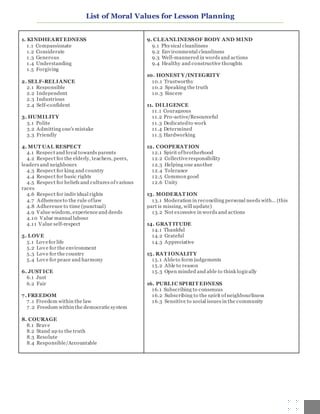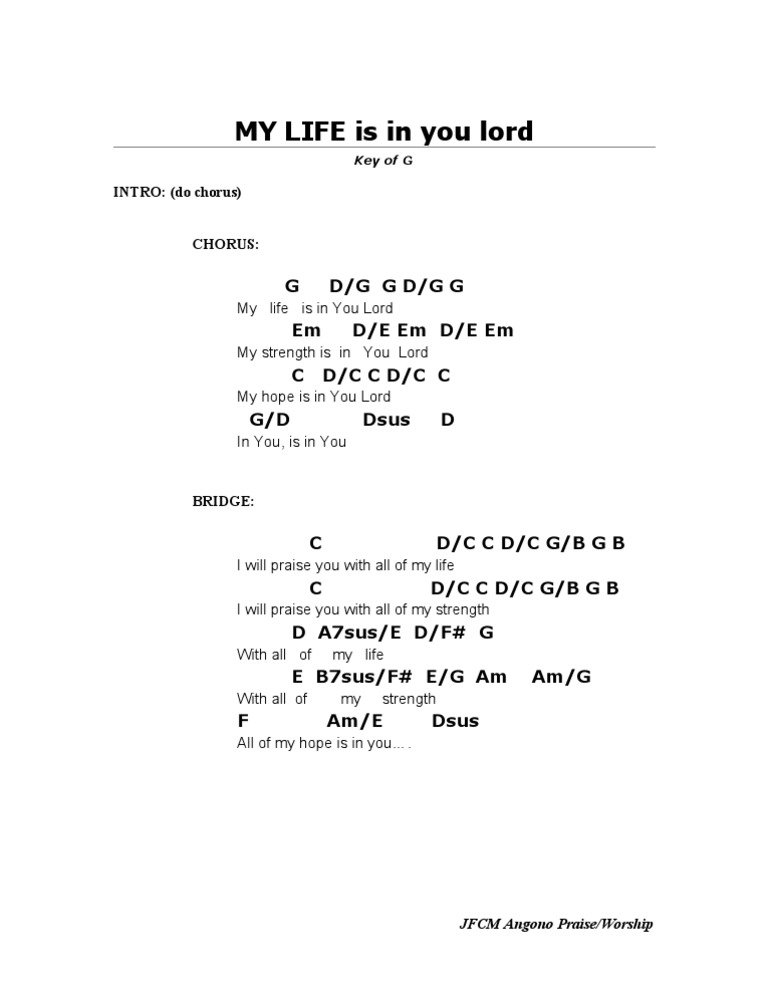Are you looking for an effective way to incorporate values into your lesson plans? If so, you’ve come to the right place! Integrating values into lesson plans is a crucial aspect of education that helps students develop not only academically but also morally and socially. In this blog article, we will explore the significance of values integration in lesson plans and discuss practical strategies to seamlessly integrate values into your teaching. So, let’s delve into the world of values integration and discover how it can enhance the learning experience for your students.
Values Integration in Lesson Plans
Teaching values to students is an important aspect of education. It helps shape their character, instills ethical behavior, and prepares them to become responsible citizens in the future. Integrating values into lesson plans can be a powerful tool for educators to create a positive and inclusive learning environment. In this article, we will explore the significance of values integration in lesson plans, discuss effective strategies, and provide examples to help educators incorporate values into their teaching practices.
The Importance of Values Integration
Integrating values into lesson plans goes beyond academic knowledge. It helps students develop a strong moral compass, empathy, respect for diversity, and a sense of responsibility towards society. Here are some key reasons why values integration is crucial in education:
1. Character Development: Values education promotes the development of positive character traits such as honesty, integrity, empathy, and perseverance. It helps students understand the importance of ethical behavior and make responsible choices in their personal and academic lives.
2. Citizenship Education: Values integration equips students with the necessary skills and knowledge to become active and responsible citizens. It encourages them to engage in civic activities, respect democratic principles, and contribute to the well-being of their communities.
3. Social and Emotional Learning: Values-based education supports social and emotional learning by fostering self-awareness, self-management, social awareness, relationship skills, and responsible decision-making. It helps students develop strong interpersonal skills and promotes positive relationships among peers.
4. Inclusive Learning Environment: When values are integrated into lesson plans, it creates an inclusive and accepting classroom environment. Students from diverse backgrounds feel respected and valued, fostering a sense of belonging and promoting positive interactions among classmates.
Strategies for Values Integration
Integrating values into lesson plans requires careful planning and thoughtful implementation. Here are some effective strategies that educators can use to integrate values seamlessly into their teaching practices:
1. Identify Core Values: Start by identifying the core values you want to focus on in your lesson plans. These could include respect, honesty, empathy, responsibility, fairness, and perseverance. Discuss these values with the students and create a shared understanding of their importance.
2. Infuse Values Across Subjects: Values integration can be done across various subjects, not limited to specific subjects like moral education or character development. Look for opportunities within your curriculum to incorporate values, such as discussing ethical dilemmas in science or analyzing historical events through the lens of justice and fairness.
3. Incorporate Real-Life Examples: Connect values to real-life examples that students can relate to. Use current events, literature, biographies, or case studies to illustrate how values play a role in different situations. Encourage students to reflect on these examples and discuss the implications of different decisions.
4. Teach Through Dialogue: Engage students in meaningful discussions and debates to promote critical thinking and values exploration. Encourage students to express their opinions, listen actively to others, and learn from diverse perspectives. These dialogues can help students understand the complexities of values and develop their own ethical framework.
5. Service-Learning Projects: Engage students in service-learning projects that align with the values being taught. This hands-on approach allows students to apply their knowledge and skills while making a positive impact in their communities. It helps instill a sense of responsibility and empathy towards others.
6. Role-Modeling: As an educator, you play a crucial role in modeling values in your own behavior. Be consistent and authentic in your actions, demonstrating the values you promote in the classroom. Students often learn more from what you do than what you say.
7. Reflective Activities: Incorporate reflective activities into your lesson plans to help students internalize the values being taught. Journaling, group discussions, or even short writing assignments can provide opportunities for students to reflect on their own values, experiences, and growth.
Examples of Values Integration
To bring clarity to the concept of values integration in lesson plans, let’s explore a few examples across different subjects:
1. Language Arts: In a language arts lesson, you can integrate the value of empathy by analyzing characters in a story and discussing their motivations, emotions, and dilemmas. Encourage students to imagine themselves in the characters’ shoes, fostering understanding and empathy.
2. Science: In a science lesson on environmental conservation, integrate the value of responsibility by discussing the impact of human actions on the planet. Encourage students to brainstorm solutions and take action in their own lives to promote environmental sustainability.
3. Mathematics: In a math lesson on problem-solving, integrate the value of perseverance by highlighting the importance of not giving up when faced with challenges. Share stories of mathematicians who persisted in their work despite setbacks, emphasizing the value of perseverance in achieving success.
4. Social Studies: In a social studies lesson on historical events, integrate the value of fairness by analyzing different perspectives and discussing the concept of justice. Encourage students to think critically about the fairness of historical decisions and how they impact society.
Integrating values into lesson plans is a powerful way to foster character development, citizenship education, and social-emotional learning. By infusing values across various subjects, incorporating real-life examples, and engaging students through dialogue and reflective activities, educators can create an inclusive and values-driven learning environment. By consciously integrating values into their teaching practices, educators play a vital role in shaping students’ character and preparing them to navigate ethical challenges in the future.
Values Integration Video Presentation
Frequently Asked Questions
What is values integration in a lesson plan?
Values integration in a lesson plan refers to the intentional incorporation of moral and ethical values into the teaching and learning process. It involves guiding students to understand and apply values such as respect, responsibility, honesty, empathy, and fairness in their academic and personal lives.
Why is values integration important in lesson planning?
Values integration is important in lesson planning because it helps develop students’ character, social skills, and moral reasoning. By explicitly teaching and modeling values, educators can foster a positive classroom climate, promote ethical decision-making, and prepare students to become responsible and compassionate members of society.
How can teachers integrate values into their lesson plans?
Teachers can integrate values into their lesson plans by incorporating real-life scenarios that require ethical decision-making, discussing and analyzing moral dilemmas, incorporating literature or historical events that highlight values, and providing opportunities for students to reflect on their own values and actions. Additionally, teachers can emphasize values through classroom discussions, cooperative learning activities, and role-playing exercises.
What are the benefits of values integration in lesson plans?
Integrating values into lesson plans can have numerous benefits for students. It helps them develop empathy, respect for diversity, and a sense of social responsibility. Values integration also promotes critical thinking, self-reflection, and ethical reasoning skills. Moreover, it creates a positive classroom environment that enhances students’ engagement, motivation, and overall well-being.
How can values integration enhance student learning?
Values integration can enhance student learning by providing a meaningful context for academic content. When students see the relevance of what they are learning to their own lives and values, they become more motivated and engaged. Values integration also fosters a deeper understanding of complex concepts and encourages students to think critically and make connections between different subject areas.
Are there any challenges to values integration in lesson planning?
Yes, there can be challenges to values integration in lesson planning. Some common challenges include the diversity of student backgrounds and beliefs, constraints imposed by curriculum requirements or standardized testing, and the need for teachers to navigate sensitive topics in an age-appropriate manner. However, with careful planning, open dialogue, and a supportive school culture, these challenges can be addressed effectively.
Final Thoughts
Values integration in lesson plans plays a crucial role in fostering holistic growth and character development among students. By incorporating values such as respect, empathy, and integrity into educational activities, teachers can create meaningful learning experiences that go beyond academics. Students not only gain knowledge but also develop essential life skills and ethical decision-making abilities. Through active participation in lessons that emphasize values integration, students understand the practical application of these values in real-world situations, preparing them to become responsible and compassionate individuals. With values integration in lesson plans, educators can nurture well-rounded students who contribute positively to society.




